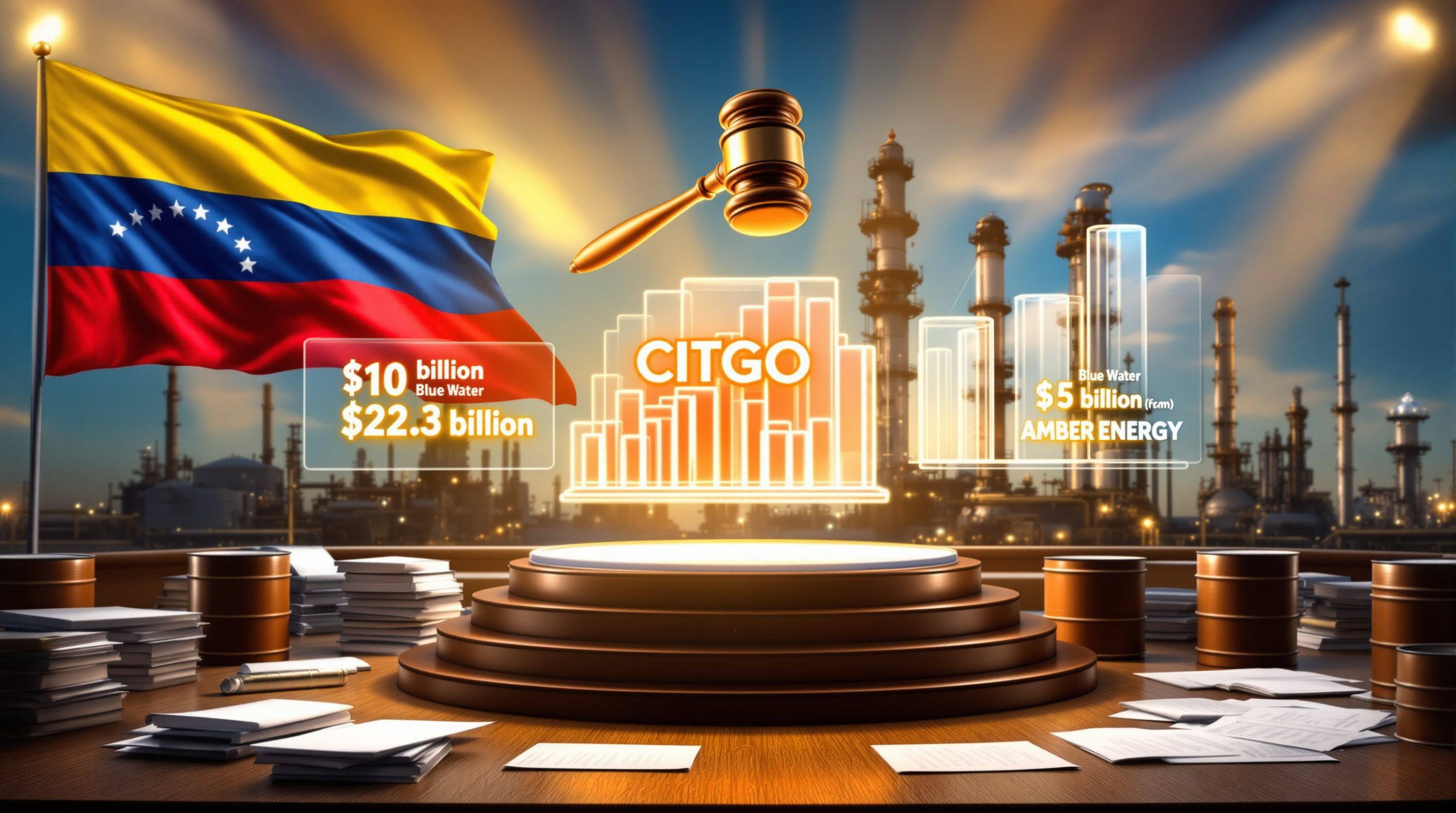The US-Australia critical minerals framework represents a groundbreaking bilateral partnership designed to fundamentally reshape global supply chains for materials essential to defense, technology, and renewable energy sectors. This strategic agreement aims to establish mineral security independence while directly challenging existing market monopolies that threaten Western economic and defense interests.
Critical minerals encompass rare earth elements, lithium, graphite, titanium, and other materials essential for manufacturing semiconductors, military equipment, electric vehicle batteries, and renewable energy infrastructure. These resources power everything from smartphone circuits to missile guidance systems, making their reliable supply crucial for national security and economic competitiveness. Furthermore, the importance of a critical minerals energy transition cannot be understated in today's geopolitical landscape.
According to ABC News, the framework enables mining companies to apply for financing for projects producing materials needed for weapons, electronics, renewable technologies and more. The partnership establishes a unique ownership structure where both governments will acquire equity positions in funded facilities while securing right of offtake agreements, essentially guaranteeing supply access for both nations.
Prime Minister Albanese emphasised that this framework represents taking the Australia-US relationship to that next level, focusing not merely on resource extraction but on investment across the supply chains to ensure value-added processing rather than solely digging things up and exporting them. This approach marks a significant shift from traditional resource export models toward integrated supply chain development.
How Much Investment Will the Framework Generate?
The US-Australia critical minerals framework commits to deploying $3 billion USD within six months of implementation, representing one of the largest bilateral mineral investment initiatives in recent history. This rapid deployment schedule demonstrates the extraordinary urgency both nations place on supply chain diversification and strategic independence.
Investment Timeline and Scale:
• Immediate Investment Phase: $3 billion USD within six months
• Total Framework Pipeline: Up to $8.5 billion across multiple projects
• Geographic Coverage: Projects spanning nearly every Australian state and territory
The market responded immediately to the announcement, with critical mineral stocks rallying in early trading following the framework's unveiling. This positive market reaction indicates investor confidence in the partnership's potential to transform supply chain dynamics and create profitable opportunities in the critical minerals sector.
President Trump projected ambitious production outcomes, suggesting that about a year from now there would be abundant critical minerals and rare earths available. However, industry experts note that bringing new mining and processing facilities online typically requires significantly longer timeframes than political projections might suggest.
The framework's financial structure includes government ownership stakes alongside private investment, creating a hybrid model that balances public strategic interests with private sector efficiency. This approach aims to ensure projects remain commercially viable while meeting national security objectives for both countries.
Which Australian Projects Will Receive Priority Funding?
The framework prioritises several flagship projects across multiple Australian states, each targeting specific critical minerals with strategic importance for defence and technology applications.
Western Australia's Gallium Production Hub
The Alcoa-Sojitz gallium refinery represents the framework's inaugural project, with financing announced from both Australian and US government sources. This facility targets 100 tonnes annual production capacity, which would supply approximately 13-14% of global demand based on current worldwide consumption of 700-750 tonnes yearly.
This project directly addresses China's position as the world's biggest supplier of gallium, a computer chip material essential for semiconductor manufacturing. The refinery's development will significantly shift global dependence patterns away from Chinese-controlled supply chains.
Northern Territory's Defence Applications Focus
The Nolans Project concentrates on neodymium production specifically for military applications including night vision devices and guided missiles. This facility addresses critical defence supply vulnerabilities while establishing domestic processing capabilities for materials essential to precision weaponry and surveillance equipment.
Multi-State Strategic Mineral Development
Priority Projects by Region and Applications:
| Location | Primary Minerals | Strategic Applications | Global Significance |
|---|---|---|---|
| Western Australia | Gallium, Heavy Rare Earths | Computer chips, EV magnets | 13-14% of global gallium demand |
| Northern Territory | Neodymium | Military optics, guidance systems | Defence supply security |
| Queensland | Graphite | Battery anodes, steel production | World's third-largest deposit |
| Victoria/NSW | Titanium, Zircon | Aerospace, medical devices | Multi-state coordination |
The Iluka Eneabba refinery in Western Australia, which has already secured $1.75 billion in Commonwealth loans, could produce a quarter of the world's global heavy rare earths supply. These materials provide essential components for magnets in electric vehicles, military aircraft parts, and industrial equipment.
Queensland's graphite development sits on the world's third-largest known deposit, positioning this project to significantly impact global battery supply chains. Natural graphite serves as a crucial component in lithium-ion battery anodes, making this development essential for electric vehicle manufacturing independence. Moreover, this aligns with Australia's broader critical minerals strategic reserve initiatives.
Why Is China's Market Dominance Driving This Partnership?
China's overwhelming control of critical mineral supply chains has created strategic vulnerabilities that the US-Australia critical minerals framework directly addresses through coordinated Western response initiatives.
Understanding China's Strategic Market Position
China currently maintains control of approximately 90 percent of the refining market for critical minerals while simultaneously operating as the world's biggest supplier of key materials like gallium. This dominant position extends beyond simple market share into strategic leverage over Western technology and defence industries.
Recent escalations in Chinese export control policies have demonstrated how mineral dependencies can become geopolitical pressure points. Earlier this month, China further tightened export controls on critical mineral technologies by requiring exporters to obtain government permission before shipping rare-earth mining and smelting equipment to foreign buyers.
Economic Pressure Through Subsidised Production
China's approach involves heavily subsidising its critical minerals sector while aggressively ramping up production to drive global prices down. This calculated strategy has led to price falls that other international producers cannot compete with, effectively using economic pressure to maintain market dominance. Additionally, the ongoing US-China trade war impacts have intensified these supply chain concerns.
This subsidised production model has put Australian and other foreign facilities under extreme pressure, making it economically challenging for Western nations to maintain competitive processing capabilities without strategic government intervention.
Key Market Control Mechanisms:
• Refining Dominance: 90% control of global refining capacity
• Price Manipulation: Subsidised production driving down global prices
• Export Controls: Government permission required for technology transfers
• Supply Chain Integration: Vertical control from mining through processing
The framework represents a coordinated Western response to these market distortions, using government financing and strategic reserves to create economically viable alternatives to Chinese-controlled supply chains.
How Will This Framework Reshape Global Supply Chains?
The US-Australia critical minerals framework has potential to fundamentally alter global market dynamics through strategic capacity development and coordinated supply chain diversification initiatives.
Production Capacity Transformations
Several framework projects could create substantial shifts in global supply patterns. The Eneabba refinery expansion alone could produce 25% of worldwide heavy rare earth demand, while Queensland's graphite development leverages the world's third-largest known deposit to influence battery supply chains.
These capacity additions will create alternative supply sources for materials that currently flow predominantly through Chinese-controlled processing facilities. The strategic significance extends beyond simple diversification into genuine supply security for Western technology and defence industries. Similarly, the European CRM facility developments demonstrate a coordinated Western response to supply chain vulnerabilities.
Strategic Reserve Integration and Price Stability
Australia's planned critical minerals strategic reserve will work alongside the framework to provide price stability through floor pricing mechanisms. This strategic reserve could remove investment risks by setting minimum price levels for priority minerals, protecting private investors from artificial price manipulation.
A government taskforce is currently considering potential price support mechanisms and determining which specific minerals will receive strategic reserve protection. The reserve system is scheduled to become operational by the end of next year, creating a comprehensive support structure for framework projects.
Supply Chain Impact Areas:
• Heavy Rare Earths: 25% of global supply from Australian facilities
• Graphite Processing: Alternative to Chinese battery-grade material
• Defence Materials: Secure supply chains for military applications
• Technology Inputs: Semiconductor and electronics supply diversification
The framework's integration with strategic reserve systems creates a model that other democratic allies may replicate, potentially establishing coordinated alternative supply networks that reduce collective dependence on Chinese-controlled resources.
What Are the Defence and Security Implications?
The framework directly addresses critical vulnerabilities in defence supply chains, with explicit connections between mineral access and national security capabilities across multiple application areas.
Military Technology Dependencies
President Trump explicitly linked the agreement to military applications including ships, vehicles, guns and ammunition, highlighting how mineral access intersects with defence manufacturing capabilities. The Nolans Project's focus on neodymium production specifically targets materials used in night vision devices and guided missiles. This complements the recent US mineral production order focusing on national security applications.
Financing for initial projects includes support from the US War Department, demonstrating direct military investment in securing strategic material supplies. This military involvement underscores the defence establishment's recognition that mineral supply security represents a fundamental national security requirement.
Allied Supply Chain Coordination
Beyond bilateral benefits, the framework establishes a precedent for allied cooperation in strategic resource development. This approach could influence similar partnerships with other democratic allies facing comparable supply chain vulnerabilities from Chinese market dominance.
Defence Applications by Material:
• Neodymium: Night vision equipment, precision guidance systems
• Gallium: Military electronics, radar systems
• Heavy Rare Earths: Military aircraft components, advanced weaponry
• Titanium: Aerospace applications, naval vessels
The geographic distribution of projects across nearly every Australian state and territory creates resilient supply networks that reduce single-point-of-failure risks in defence material procurement.
Which Minerals Will Drive the Biggest Impact?
Several specific minerals targeted by the US-Australia critical minerals framework offer transformative potential for global supply chain independence and strategic security applications.
Rare Earth Elements for Advanced Technologies
Heavy rare earth elements from Australian facilities will supply magnet production for electric vehicles, military aircraft components, and industrial equipment. These materials are essential for high-performance applications where suitable substitutes simply do not exist.
The Eneabba refinery's potential to supply 25% of global heavy rare earth demand represents a fundamental shift in market dynamics, particularly for materials used in magnets for electric vehicles and military aircraft parts.
Strategic Materials for Defence and Technology
Critical Minerals Applications and Strategic Importance:
| Mineral | Primary Applications | Strategic Value | Global Context |
|---|---|---|---|
| Gallium | Computer chips, semiconductor manufacturing | Essential for all electronics | 700-750 tonnes global demand |
| Neodymium | Permanent magnets, military optics | Defence applications critical | No suitable substitutes |
| Graphite | Battery anodes, steel production | EV supply chain independence | World's 3rd largest deposit |
| Titanium | Aerospace, medical implants | High-performance applications | Multi-state development |
Battery Material Supply Chain Independence
Queensland's graphite development addresses electric vehicle battery supply chains while reducing dependence on processed materials from China. Natural graphite requires extensive processing to meet battery-grade specifications, making domestic processing capabilities essential for supply chain security.
The world's third-largest graphite deposit in Queensland positions this project to significantly impact global battery manufacturing independence, particularly as electric vehicle adoption accelerates worldwide.
Strategic Material Priorities:
• Immediate Impact: Gallium for semiconductor manufacturing
• Defence Critical: Neodymium for military applications
• Future Growth: Graphite for battery technology expansion
• Industrial Applications: Titanium and zircon for aerospace and medical sectors
How Will Market Prices Respond to Increased Supply?
Market price dynamics under the US-Australia critical minerals framework will likely experience complex interactions between increased Western supply capacity and existing Chinese pricing strategies.
Immediate Market Reactions
Critical mineral stocks rallied in early trading following the framework announcement, indicating investor confidence in the partnership's commercial viability. This positive market response suggests financial markets recognise the framework's potential to create profitable opportunities while addressing supply chain vulnerabilities.
President Trump projected dramatic price changes, suggesting abundant critical minerals and rare earths would be available within a year, potentially driving prices to extremely low levels. However, industry analysts note that bringing new mining and processing facilities online typically requires longer development timelines than political projections might indicate.
Strategic Reserve Price Support Mechanisms
The framework's integration with Australia's strategic reserve system aims to establish price floors for priority minerals. This mechanism protects investors from artificial price manipulation while ensuring supply availability during geopolitical tensions.
A government taskforce is actively considering potential price support mechanisms and determining which minerals will receive strategic protection. These decisions will significantly influence investment patterns and project viability across the framework's development timeline.
Price Impact Factors:
• Strategic Reserves: Floor pricing to protect investments
• Competition Effects: Pressure on Chinese subsidised pricing
• Market Confidence: Investor response to supply security
• Development Timelines: Actual production versus projected schedules
The strategic reserve's price floor mechanism could encourage private investment by reducing downside risks while maintaining competitive market dynamics for efficient resource allocation.
What Challenges Could Slow Framework Implementation?
Despite ambitious timelines and substantial financial commitments, the US-Australia critical minerals framework faces several implementation challenges that could affect project development schedules and success rates.
Regulatory Approval and Permitting Delays
Opposition Leader Sussan Ley highlighted that it takes years and years to get approval for mining projects in Australia, suggesting approval process delays represent a significant barrier to meeting framework timelines. She noted concerns that Australia's investment pipeline was drying up due to regulatory inefficiencies.
Ley criticised government approaches, stating it feels as if there is a government that is anti-business and doesn't understand that once investment pipelines dry up, significant economic troubles follow. These regulatory concerns could significantly impact the framework's ambitious six-month deployment schedule.
Technical Processing and Infrastructure Requirements
Developing refining and processing capabilities requires specialised expertise and infrastructure investments that extend far beyond raw material extraction. Building these capabilities from scratch presents substantial technical challenges and workforce development requirements.
Australia has some of the world's most abundant reserves of critical minerals, but price instability and high costs of processing and refining onshore have historically slowed investment. The framework must address these underlying economic challenges to achieve sustainable development outcomes.
Implementation Challenge Areas:
• Regulatory Timelines: Years-long approval processes for mining projects
• Technical Expertise: Specialised refining and processing capabilities
• Infrastructure Development: New facilities requiring substantial capital investment
• Price Volatility: Market instability affecting project economics
Market Competition and Economic Viability
China's heavily subsidised production has created artificial price environments that make competing facilities economically challenging. The framework must overcome these market distortions through strategic financing and price support mechanisms.
The strategic reserve system's delayed implementation until the end of next year creates a gap where projects may face continued price pressures from Chinese subsidised production during critical development phases.
How Does This Compare to Other International Partnerships?
The US-Australia critical minerals framework represents one of the most comprehensive bilateral mineral agreements in terms of financial scale, strategic scope, and integrated supply chain development approach.
Scale and Strategic Integration
With $3 billion in immediate six-month deployment and up to $8.5 billion in total pipeline value, this partnership exceeds most previous bilateral resource agreements in both financial commitment and implementation urgency. According to the US-Australia Framework for Securing Supply, President Trump noted they had been working on the framework for quite a while, indicating extensive negotiations and strategic planning.
Unlike traditional trade agreements focused on resource extraction and export, this framework encompasses entire supply chain development from mining through processing and strategic reserve integration. This comprehensive approach distinguishes it from conventional bilateral resource partnerships.
Allied Cooperation Model
The framework builds upon existing security relationships while extending cooperation into economic and industrial domains. This integration demonstrates how security alliances can evolve to address economic vulnerabilities that affect national defence capabilities. Furthermore, as noted in the Prime Minister's statement, this represents a historic step in bilateral cooperation.
Partnership Distinction Factors:
• Financial Scale: $8.5 billion pipeline exceeds most bilateral agreements
• Implementation Speed: Six-month deployment timeline demonstrates urgency
• Supply Chain Integration: Complete processing capability development
• Strategic Reserve Coordination: Price support and supply security mechanisms
The framework's emphasis on government ownership stakes combined with right of offtake guarantees creates a hybrid public-private model that balances strategic control with commercial efficiency.
What Are the Long-term Economic Implications?
The US-Australia critical minerals framework promises substantial economic transformation across multiple sectors while creating new industrial capabilities and export opportunities for Australia.
Industrial Development and Employment Creation
Framework investments will generate employment opportunities across multiple Australian states while developing advanced manufacturing capabilities that extend beyond traditional mining operations. These positions span from extraction operations through sophisticated processing facilities requiring specialised technical expertise.
The geographic distribution across nearly every state and territory ensures broad economic benefits while creating new industrial centres in regional areas. This distributed approach strengthens economic resilience while revitalising communities dependent on mining sector activity.
Value-Added Export Revenue Transformation
Successful framework implementation positions Australia as a major supplier of processed critical minerals rather than merely raw material exports. Prime Minister Albanese emphasised the importance of investment across supply chains, ensuring value addition through processing rather than simply digging things up and exporting them.
This transition from commodity exports to value-added processing dramatically increases potential export revenues while building domestic industrial capacity. The shift represents a fundamental change in Australia's resource sector economic model.
Economic Impact Areas:
• Employment Generation: High-skill processing jobs across multiple states
• Export Revenue Growth: Value-added processing versus raw material sales
• Industrial Capability: Advanced manufacturing expertise development
• Regional Development: Economic revitalisation in mining communities
Strategic Economic Independence
The framework creates economic alternatives to Chinese-dominated supply chains while establishing Australia as a reliable partner for Western technology and defence industries. This positioning offers substantial long-term economic advantages as global supply chain diversification accelerates.
Integration with strategic reserve systems provides price stability mechanisms that encourage continued investment while protecting against market manipulation. This economic security framework supports sustained industrial development beyond initial government financing phases.
The partnership establishes Australia as a critical link in secure supply chains for democratic allies, creating durable economic relationships that extend beyond traditional resource exports into strategic industrial partnerships.
Are You Positioned to Capitalise on the Critical Minerals Boom?
With the US-Australia framework deploying $3 billion in just six months, savvy investors are watching ASX critical mineral stocks for breakthrough discovery announcements. Discovery Alert's proprietary Discovery IQ model delivers instant notifications when significant mineral discoveries hit the market, transforming complex geological data into actionable investment insights that could position you ahead of the broader market in this rapidly evolving sector.




